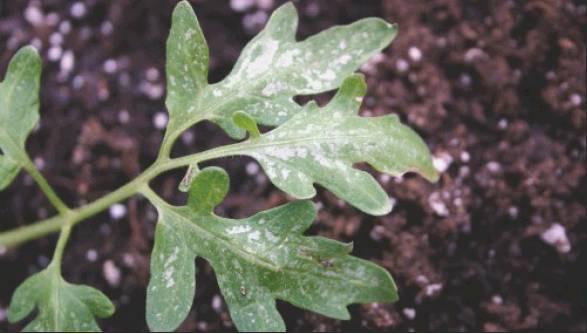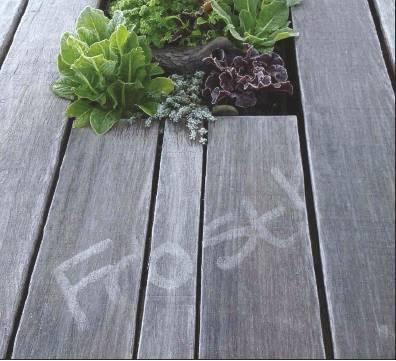Getting into Gardening
We had a freeze! But that is central Texas weather for you - one day you’ll be enjoying a sunny afternoon out on your patio. The next you’re bundled back up in a winter coat doing all you can to avoid the outdoors altogether. While the fluctuating temperatures don’t do much more than simply annoy us, they can wreak havoc on the garden and that will cause most gardeners some stress! I have already had emails flood my website asking how to save spring gardens which were hit hard by our recent sub-freezing temperatures. The very first thing I want to do to commend those who wrote to me about this issue – after all, I have been warning not to let the ‘Sirens of Spring’ lure you into starting too early. Many did, many gardens suffered, but only a few folks had the courage to admit to starting too early and wrote in asking for help!
But seriously, I would bet that almost all of us were fooled. Spring appeared to pop up in mid-February and we ran out to the garden. I have even seen a fair number of mesquite trees beginning to bloom, and old timers will tell you that, “when the mesquite trees go to blooming; no more freeze danger is looming.” While that is often true, no one bothered to tell Mother Nature about that rule so a good many of us are finding our newly planted gardens suffering from the freeze. I think I can help calm your nerves a bit.
My Great Grandmother first taught me how to deal with this issue many years ago with three simple things she wanted me to always remember.
First: Don’t panic. If you have plants already hurt by frost, don’t rush out and start whacking off the damaged bits. Leave them alone until you see new growth. Some things will be OK under it all, and the dead tissue you leave on the plant can insulate the growing points against further damage. Many gardeners’ first reaction after a spring frost is to remove the unsightly leaves. While it’s true that the brown, dropping leaves are in fact dead, you’ll want to wait before doing any pruning. It’s possible that the roots and stems are entirely unaffected, and it’s important to protect the healthy part of your plant in case of more cold weather. Trimming away the dead material exposes buds, which could cause the remaining parts of your plants to die as well.
Second: Don’t despair. If there was a freeze and you didn’t get your plants covered and there’s another night of frost on the horizon, take the time to cover them. Even if you see damage from the first night’s freeze, preventing more damage will give them a better chance to recover, and yes, many will recover.
Third: Don’t change what you are doing. Do not get caught up thinking that you need to add loads of extra water or worse, extra fertilizer, to help your freeze affected plants. You can’t save the dead parts of your plants, they are dead, but you can keep the unaffected areas healthy by continuing to water the soil normally. Damp soil retains heat better than dry dirt. By keeping the soil moist, you are protecting plants from freezing again, too. But do not flood them as that can damage the roots of an already stress plant and do even greater harm. Likewise, do not add an extra shot of fertilizer and try to jump start your freeze-damaged plant. You don’t want it to leaf out too quickly since it will stress the already suffering plant, the extra fertilizer can be too “hot” for the shocked plant roots, and besides, a good garden soil containing plenty of compost will already be hard at work helping your plants to recover.
One of the emails I received from a fellow Master Gardener in Hays County asked, “How much cold will actually kill a plant?”
That is a great question! The answer is not much, although this is usually dependent on the hardiness of the plant as well as the climate. Typically, temperatures falling below freezing will quickly damage or even kill many types of plants. However, with prompt care, many of these cold damaged plants can be rescued.
The same gardener, a former student of one of the Master Gardener classes I used to teach also asked, “What happens to cold damaged plants? Do the get stunted, just die, or what?”
While many people ask how much cold will kill a plant, the real question should be how much freezing will kill a plant. Freeze damage to plant tissue can be detrimental to plants. Light frost typically doesn’t cause major damage, with exception to very tender plants, but a hard frost freezes water in plant cells, causing dehydration and damage to cell walls. Cold injury is more likely to occur as the sun comes up. As a result of these damaged cell walls, the plant defrosts too quickly, which is what actually kills the leaves and stems.
Young trees or those with thin bark can also be affected by cold temperatures. While not always visible until spring, frost crack results from sudden drops in nighttime temperature following the daytime heating from the sun. Unless these cracks are ragged or torn, however, they usually heal themselves without much fuss from us.
In less severe cases, cold damaged plants can be saved. Frost crack damage in trees that require repair can usually be saved by carefully cutting away the torn or loose bark. Smoothing out the edges with a knife will allow the tree to form a callous on its own. To help minimize frost damage to other woody plants, lightly mist foliage before the sun hits them. Likewise, potted plants can be moved to another location away from direct sunlight.
Unless damaged plants are moved indoors or another sheltered area, do not attempt to prune damaged leaves or stems. Instead, wait until spring to cut away the damaged areas. Prune dead stems all the way back to the new growth. Live stems, however, need only the damaged areas cut back, as these will eventually regrow once warm temperatures return. For soft-stemmed plants suffering from cold injury, immediate pruning may be necessary, as their stems are more prone to rotting.
While saving frozen plants is possible, freeze damage to plant tissue and other cold injuries can often be prevented. When frost or freezing conditions are expected, you can protect tender plants by covering them with sheets or burlap sacks. These should be removed once the sun returns the following morning. Also, potted plants should be moved to a sheltered location, preferably indoors.
One final tip on pruning the dead material and fertilizing. Look at your damaged plants, once you see new growth, you can cut away the dead growth up to the first leaf bud that you see, leaving the new leaves and buds to flourish. Once you have pruned the plant, then you can fertilize a little bit around each plant to get it growing again. I recommend an organic, all-purpose plant food that is a good, slow starting mix of 5-5-5 (5% nitrogen, 5% potassium and 5% phosphorus). Remember you want a mild fertilizer for this and not one of those “Miracle” products that may be too ‘hot’ for this purpose. So, relax your garden will be fine.





